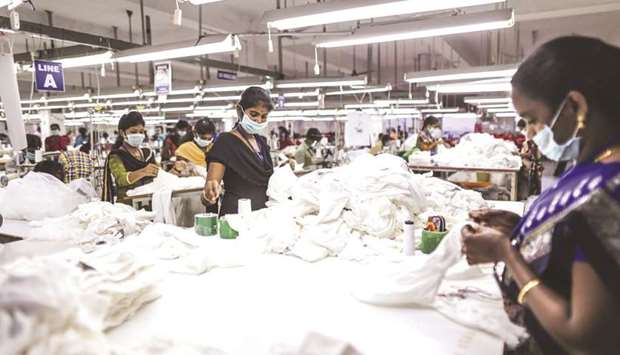Temporary factory closures and layoffs have already begun to hit low wage workers across Asia as quarantines and travel restrictions from the new coronavirus disrupt supply chains linked to China.
For 31-year-old Myanmar worker Aye Su Than, the suspension of production at Hunter Myanmar, which produces clothes for an Italian fashion brand, came out of the blue when managers informed its 900 employees almost two weeks ago.
“They said, ‘There are no orders, no buyers, because of the virus we are going to shut down,’” said Aye Su Than, who is five months pregnant and makes about $130 per month.
She said she got $320 in compensation from the factory, which declined to comment when contacted.
“We don’t know what to do now… It is not easy to apply for a job elsewhere during my pregnancy,” Aye Su Than said, sitting in a tea shop in Hlaing Tharyar, an industrial district on the outskirts of Yangon.
Such bad news is being repeated in many parts of Asia’s more than $290bn textile industry, which accounted for 60% of the world’s readymade garments, textiles and footwear in 2015, according to World Trade Organisation statistics.
Low-wage workers are particularly vulnerable to any global economic downturn triggered by travel restrictions and quarantines as the coronavirus outbreak spreads from China around the world, roiling supply chains.
International brands from Uniqlo to Adidas have wide networks of suppliers and can potentially shift production outside China to fill the potential gap in production from that country – the world’s largest apparel and textile manufacturer.
Still, sourcing lines in the clothing industry are deeply intertwined and factories in southeast Asia are dependent in turn on China for supplies like cloth, buttons and zippers.
Cambodia said this week that 10 factories had already applied to suspend operations and would pay partial wages to about 3,000 workers.
The government in Phnom Penh expects a total of 200 to slow or stop production in March because of coronavirus, affecting 100,000 of more than 850,000 employed in the $7bn sector, which is Cambodia’s largest employer.
In Bangladesh, the world’s second-largest garment manufacturing industry after China, factories are still running but anxiety is growing.
“Nobody knows what will happen ahead but the factory owners are really worried,” said Mohammed Nasir, a director of the Bangladesh Garment Manufacturers and Exporters Association.
Dependence on China
Readymade garments are a mainstay of Bangladesh’s economy, contributing almost 16% of national output and about $34bn worth of exports in the last fiscal year ending in June 2019.
“Almost 70% of our woven fabrics come from China and naturally if goods do not arrive on time, the readymade garments industry will be affected.
If the crisis in China is prolonged, the impact would be severe,” Nasir said. Bangladesh has about 4,000 garment factories employing some 4mn workers.
Neighbouring Myanmar has a smaller industry but is more dependent on China, with the Myanmar Garment Manufacturers Association warning that half of the nation’s 500 factories could shut down by March if the crisis persists.
China supplies about 90% of fabrics sent to Myanmar, which so far has not reported any cases of the virus, but the closure of the land border to try to keep infections out has disrupted the supply chain.
“We can still export, but we cannot say what is going to happen in the next one or two months,” Aung Min, vice-chairman of the manufacturers’ association, told Reuters. “This is kind of scary – the situation is uncertain.”
A prolonged crisis could eventually see retailers face a shortage of clothing, although fashion giant H&M Group said it currently doesn’t see the virus causing any larger delays in deliveries.
“We are in close contact with our suppliers in China and evaluating the situation together with them on a daily basis,” H&M spokeswoman Ulrika Isaksson said, adding that the company was also exploring other options for production.
Manufacturers, too, are scrambling to find alternative suppliers of everything from fabric to buttons and zippers.
“It is not easy to shift the sourcing destination overnight. But buyers are currently looking for alternative sources,” said Siddiqur Rahman, a leading garment exporter.
Alternative raw material suppliers are being explored in Thailand, Indonesia, Pakistan and India but then costs will go up, he said.
“Are the buyers ready to pay more? I don’t think so. So, it is not that easy. But we’ll have to look beyond China to survive in the long run,” said Rahman.

A garment factory in Dhaka. In Bangladesh, the world’s second-largest garment manufacturing industry after China, factories are still running but anxiety is growing. u201cNobody knows what will happen ahead but the factory owners are really worried,u201d said Mohammed Nasir, a director of the Bangladesh Garment Manufacturers and Exporters Association.
